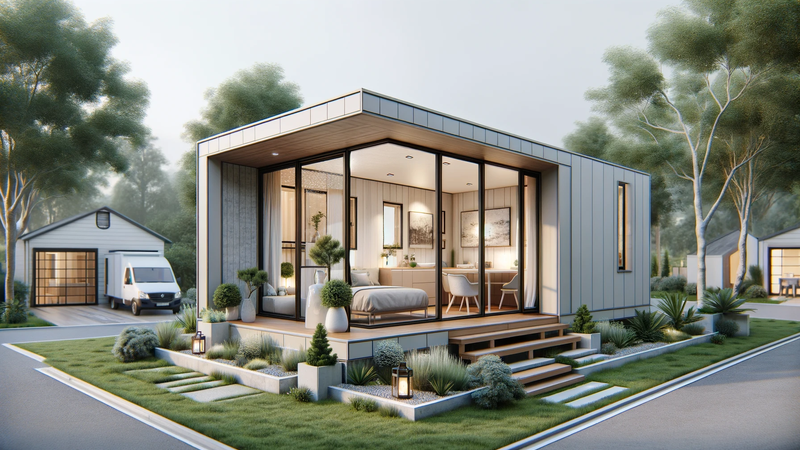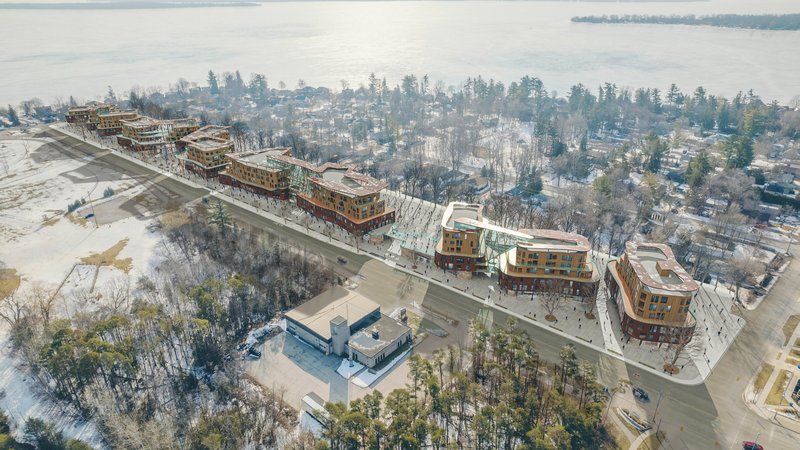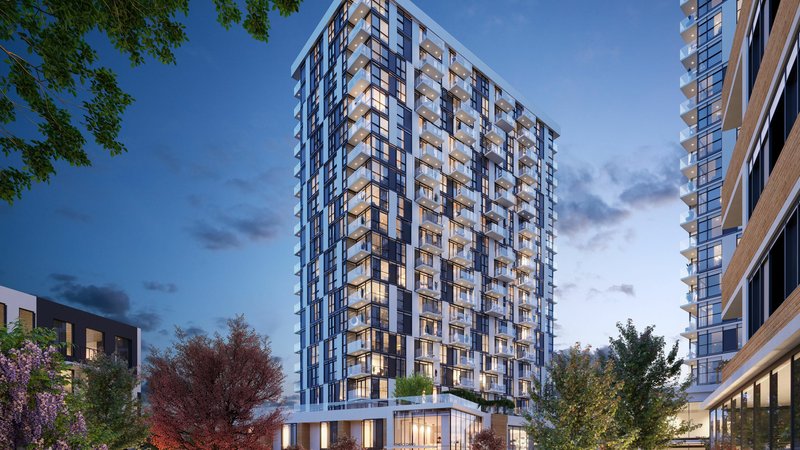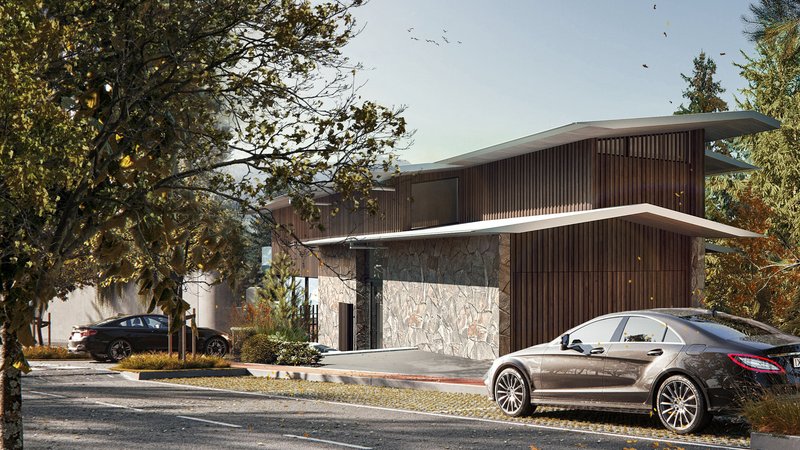
Engaging Buyers with 3D Visuals: Marketing Strategies for Modular Homes
Jan. 10, 2024
3D animations also referred to as flythroughs or walkthroughs allow you to walk or fly a viewer through a property before it is built. Animation allows you to bring a project to life. You can showcase everything from walking through the front door to taking a swim in the pool. RealSpace offers exceptionally high-quality 3D animations with optional scriptwriting and narration. We offer all our animations in 1080 HD format with the possibility of going to full 4K HD.
Virtual Reality is an interactive viewing experience allowing the user the freedom to look around freely. 360' animation is extremely useful in Real Estate. Most Virtual Reality renders require the viewer to use specialized technology to view the finished project. Because of this, we cater to those looking to offer an interactive experience with a low entry-level. Our 360-degree architectural videos allow users to spin around in all directions while merely using YouTube or a simple online video viewer.
We, at Realspace, created this guide to help you understand the architectural 3D animation process and the 3D animation industry. 3D animation can be a somewhat confusing process and we hope that this guide supports you to make better informed decisions by understand the options available.
Reading this guide can help better equip you to understand what animation best fits your needs, how to use animation to showcase your project, what styles are available to you, and how to use cinematography techniques to showcase and enhance your architectural video project. This guide brings you through the process of animation and how animation is priced.
We wrote this guide based on our experiences as a 3D architectural animation studio working with companies ranging in scale from independent architects to Fortune 500 Companies.
We hope that this guide helps anyone, whether you are looking to hire an Architectural Animation Studio, or just interested in 3D animation.
The following is an outline of the animation process from a clients perspective:
1.) Conveying your ideas and vision.
The first step in any 3D animation process is to convey your design, idea, development, invention or concept to the 3D animation company. You may choose to provide architectural drawings, plans, engineering plans, sketches, an architectural 3D model, an engineering 3D model, or a similar video or animation. The key is to clearly convey what you want the animation to showcase.
2.) 3D model preview.
The 3D animation company creates a few rendered images from the materials you provided. These images are presented to you as either a series or storyboard to show you what the animation might look like. This step allows you to provide feedback prior to making the animation.
3.) Storyboarding (not always necessary).
Depending on the complexity of the animation, your project may or may not require a storyboard. For example, architectural fly throughs tend not to require storyboarding, since the path is usually linear from the perspective of a person walking from room to room. If you are envisioning a more dramatic cinematic experience, storyboarding can be very useful to get everyone on the same page and to direct the animation properly.
4.) Low resolution drafts and refining.
The 3D animation company will send you low resolution drafts for feedback to refine the animation. The draft is done in low resolution to drastically cut down on the time it takes the computer to create the animation. Low resolution drafts will be provided to you that incorporate your feedback until you are satisfied with the animation.
5.) Full resolution final animation.
Once you have signed off on the animation the full resolution final draft is computed. Generally, any changes needed at this point, other than issues that are made visible by the higher resolution draft, are considered a change of scope. Therefore, it is very important to make sure you are completely satisfied with the low resolution animation before signing off.
There are two major costs to a 3D animation project, the modeling and setup labour and the time it takes to compute the animation. Please see our animation pricing guide for more information on the pricing of 3D animations.
3D walkthrough projects generally take 4-6 weeks to complete. This time frame is generally due to the computing time for drafts. Updating part of an animation can take several hours an upwards of several days to compute. To make even minor tweaks can have a long turnaround time.
‘Quality’ in 3D animation is defined by two components: resolution and realism. Resolution is pretty straight forward. Simply put, it is the dimensions of the animation: the difference between DVD quality and HD quality and now as high as 4K. The general rule is the higher the resolution of the animation the crisper and clearer the image quality will be and along with that the longer rendering times. Having high resolution can impact the overall price of your project.
Realism is somewhat more complicated and it might help to first explain how it is created. Realism is achieved through a combination of the 3D rendering software settings, along with the setup of the 3D scene. In other words, realism really depends on the setting utilized, and the skills of the artist, to create the desired realism of the scene. Putting aside the setup of the scene, one thing to keep in mind is the more realistic the settings, the longer it will take to compute the animation. The software is simulating real world flow of light, which is extremely complicated. Simulating the interaction of light between objects takes very complex calculations and takes the the computer a long time to complete.
3D animation is an extremely versatile media. The artist has control over almost all aspects of the 3D scene, which makes the possibilities almost endless. In the case of architectural animation, realism is generally the main goal. Although, some alternative styles can be used to enhance the experience. Generally, the best way to communicate to the 3D animation company the style you would like to see for you animation project is to find an example you like of an animation style.
Still renders are a great way to showcase rooms and their features. Animations are a great way to tie those rooms together and bring the space to life. It allows you to show the viewer the flow of the space. Moving through a 3D model can bring it to life and give the used the experience of “being there”.
We at RealSpace offer professional, high quality, 3D animation services. We understand that it can be a difficult process and we do our best to make is as easy as possible for our clients. Our philosophy is to make every project we do a new centerpiece for our portfolio, showcasing your project and our skills as a 3D studio. Please click here to learn more about our animation services.
The timeline for an architectural animation can vary considerably based on scope and client requirements. Projects can be done in as little as a week while others can take 3-5 weeks to complete. The key to ensuring you are happy with the final product and not behind on your deadlines is to make it clear at the start of a project what your timelines are. As each project is different, it is best to inquire about the estimated turnaround times during the quoting process.
3D animation is the use of computer software to create fluid, computer-generated videos. One of the most well-known examples of 3d animation would be the work Pixar has done for their movies. What we do is based on the same principles; however, applied for showcasing architectural structures. Animations are great learning aids and can quickly and effectively tell a story which words or pictures can not. RealSpace’s specialty is undoubtedly our ability to create architectural animations. We are one of the industry leaders in the creation of animations thanks in part to our rendering technology which allows us improved rendering time over other companies. In addition to our animations, we often create drone videos containing superimposed animations of future developments and professional filming to showcase surrounding neighborhoods. 3D animation can be a somewhat confusing process, and we hope that our FAQ supports you to make better-informed decisions by understanding the options available. Reading this FAQ can help better equip you to understand what animation best fits your needs, how to use animation to showcase your project, what styles are available to you, and how to use cinematography techniques to showcase and enhance your architectural video project. This guide brings you through the process of animation and animation pricing. We have experience as a 3D architectural animation studio working with companies ranging in scale from independent architects to Fortune 500 Companies.
3D animation ‘Quality’ has two components: resolution and realism. Resolution is pretty straight forward. It is the dimensions of the animation: the difference between DVD quality and HD quality and now as high as 4K. The general rule is the higher the resolution of the animation the crisper and more precise the quality will be. The downside is that it takes longer to create and results in a higher cost. Realism is somewhat more complicated. Realism is achieved through a combination of the 3D rendering software settings, along with the setup of the 3D scene. In other words, realism depends on the settings utilized, and the skills of the artist, to create the desired realism. Putting aside the setup of the scene, one thing to keep in mind is the more realistic the settings, the longer it will take to compute the animation. The software is simulating real-world lighting, which is complicated. Simulating the interaction of light between objects takes highly complex calculations and requires a long time to compute.
Still renders are a great way to showcase rooms and their features. Animations are a great way to tie those rooms together and bring the space to life. It allows you to show the viewer the flow of the space. The movement can bring a project to life and give the user the experience of “being there.”
The following is an outline of the animation process from a clients perspective:
Animations are one of the most complex aspects of 3d rendering. Some factors that affect the cost of animation are as follows:
For an exact price, please send us an email and brief description along with a copy of your architectural plans (if you have plans).
For a more in-depth explanation of 3d animation, costs see our Animation Pricing Guide.
3D animation is an extremely versatile media. The artist has control over almost all aspects of the 3D scene, which makes the possibilities almost endless. In the case of architectural animation, realism is generally the primary goal. Although some alternative styles can be used to enhance the experience. The best way to make sure you get the style you are looking for is to provide an example of an animation you like.

Jan. 10, 2024

Dec. 7, 2023

Nov. 20, 2023

Oct. 18, 2023

Oct. 17, 2023

Oct. 17, 2023

Oct. 16, 2023

Oct. 16, 2023

Sept. 12, 2023

Aug. 2, 2023





















